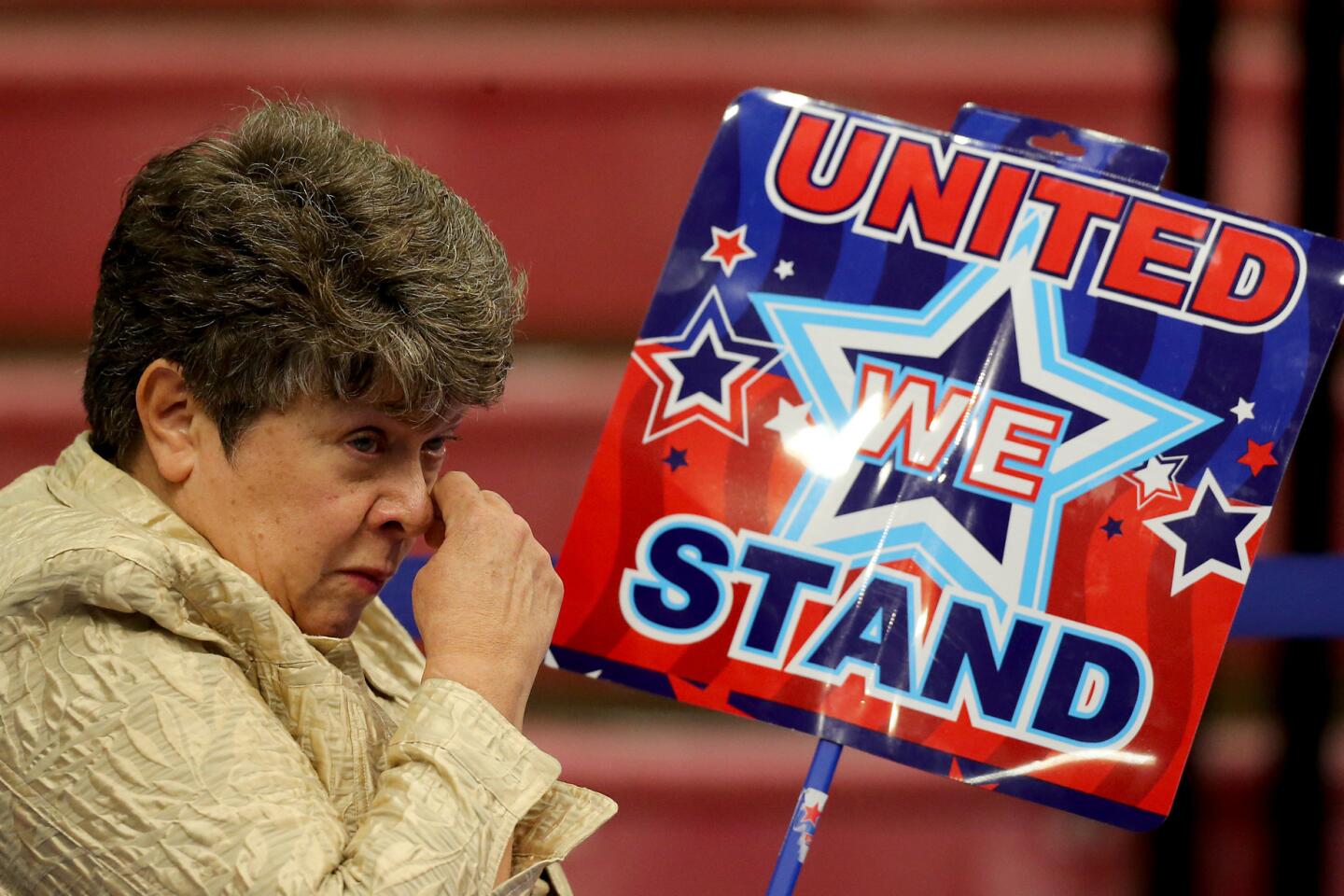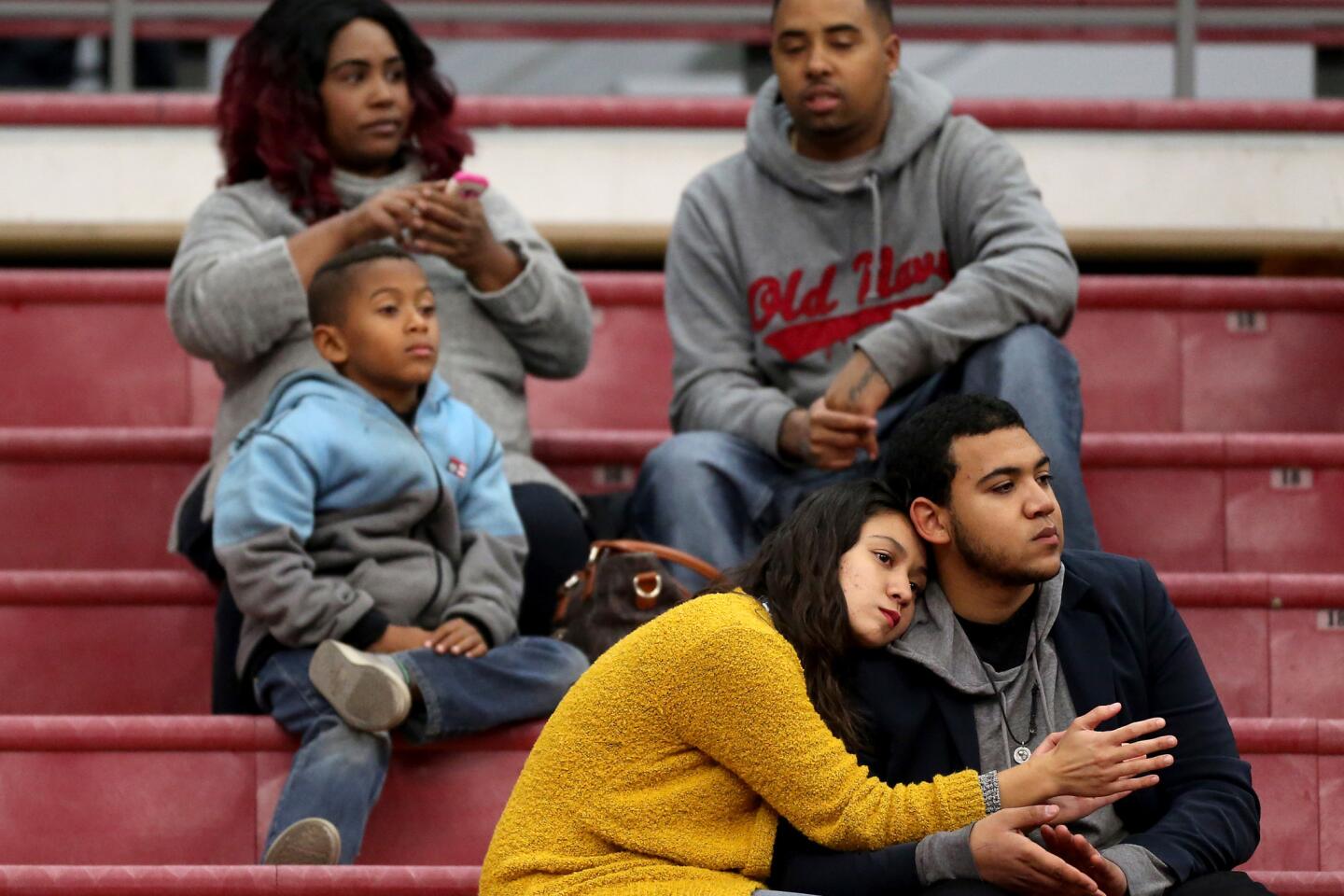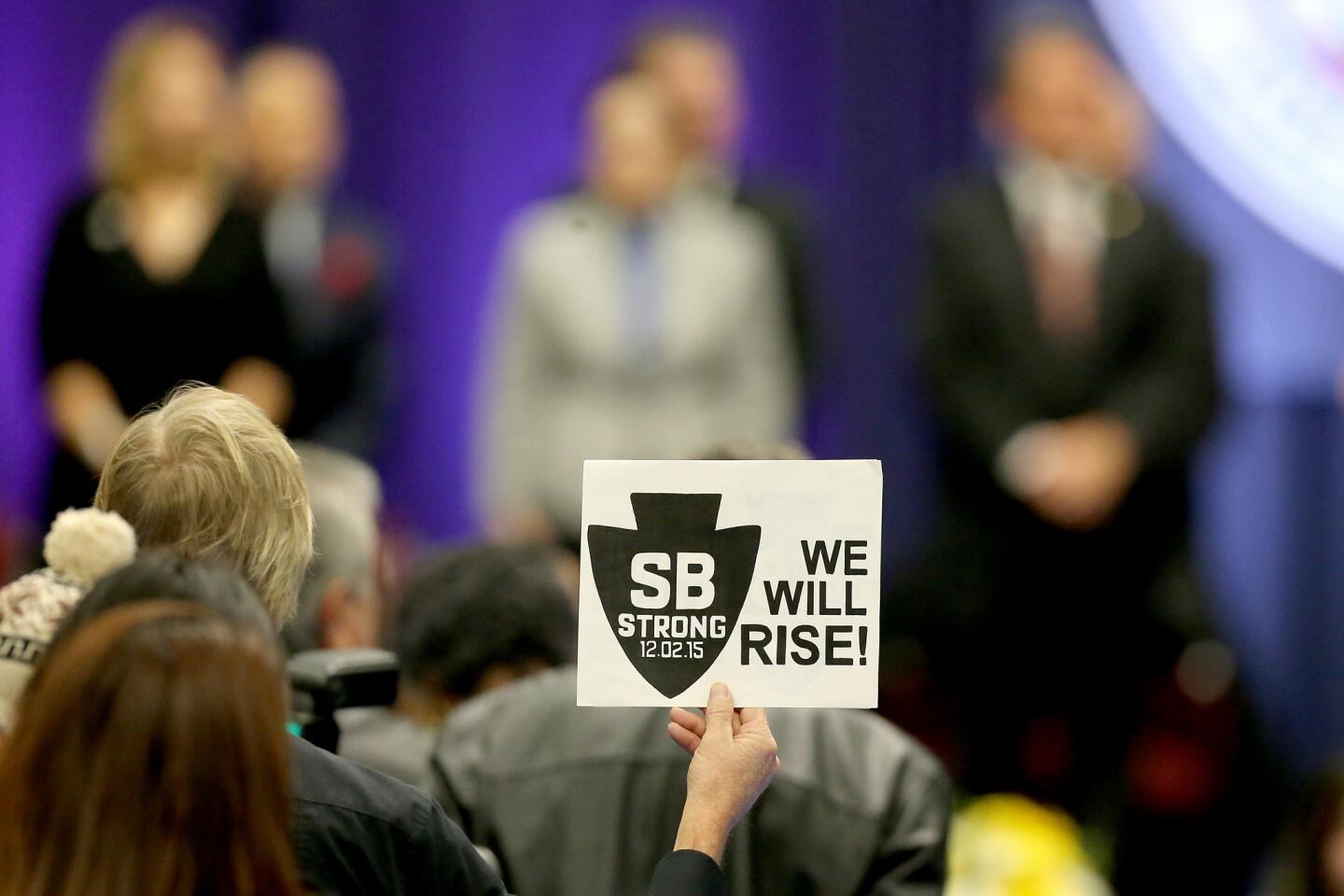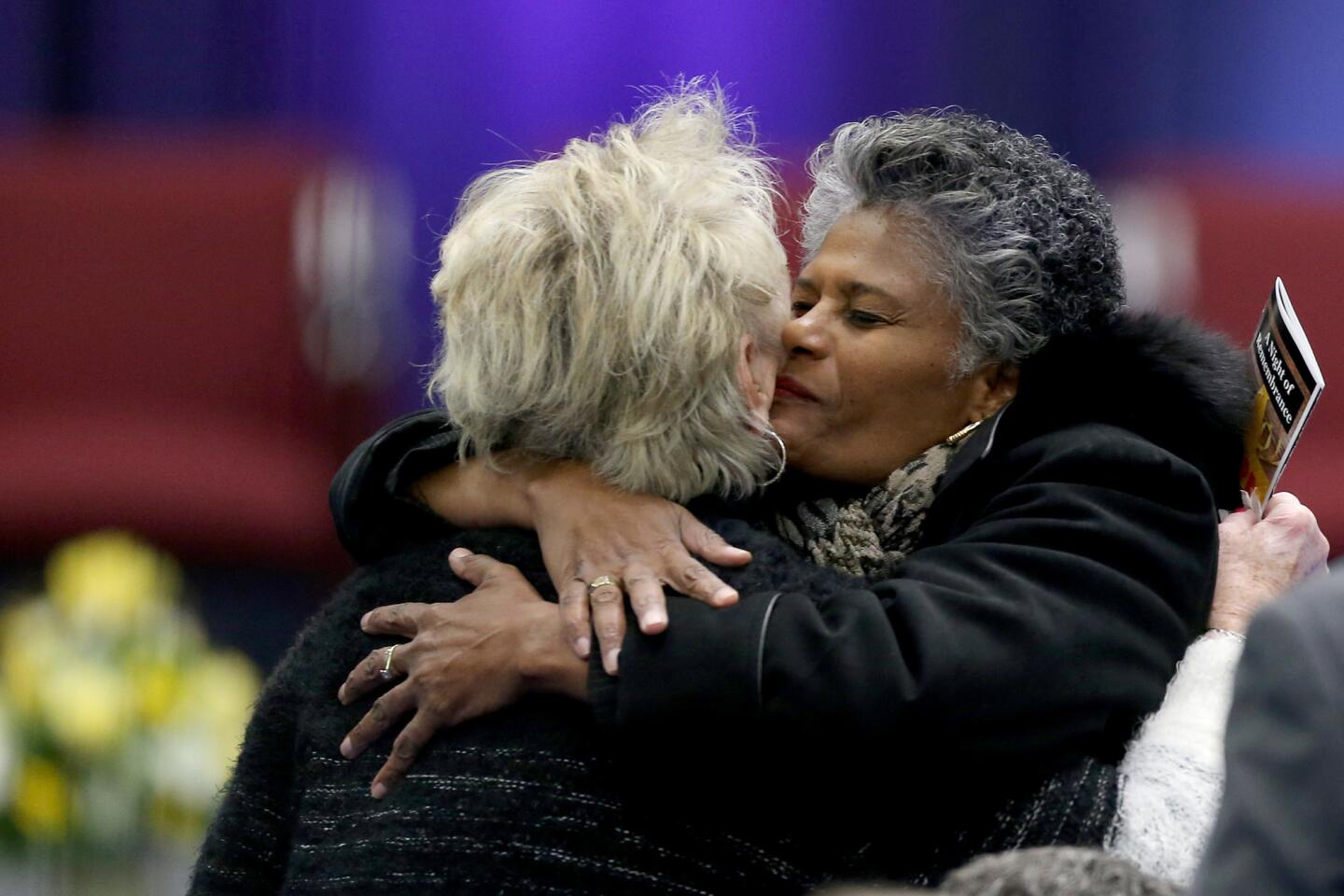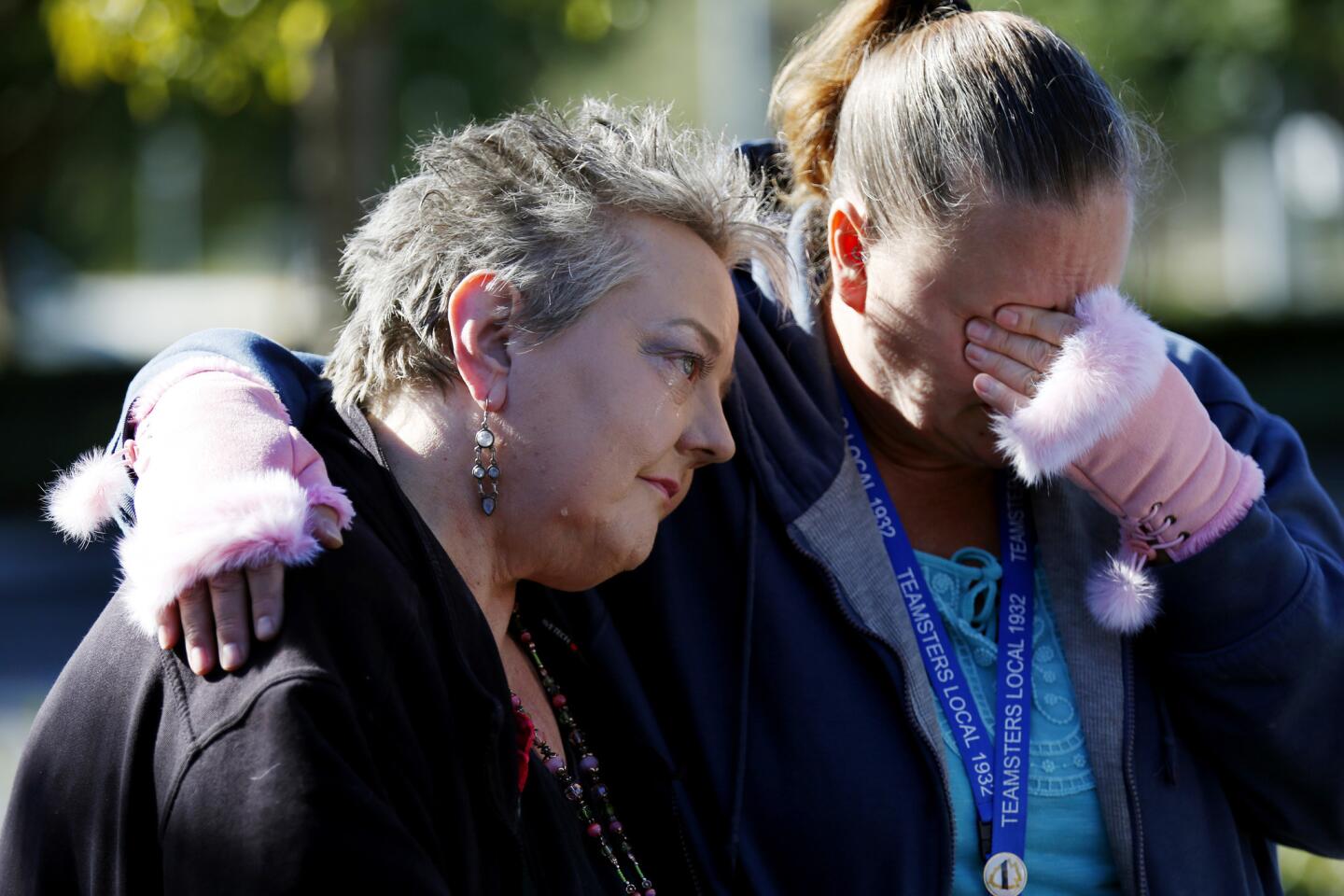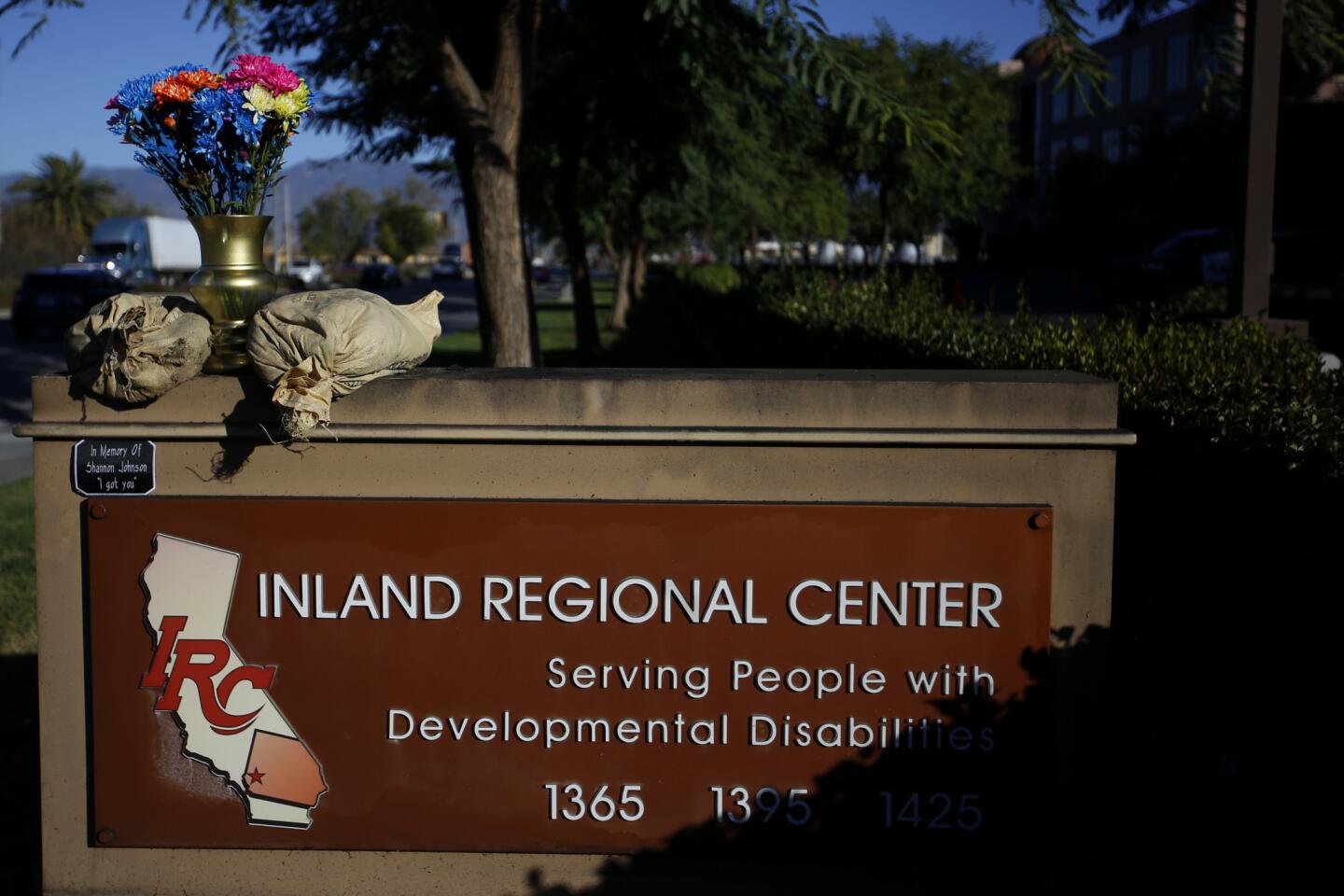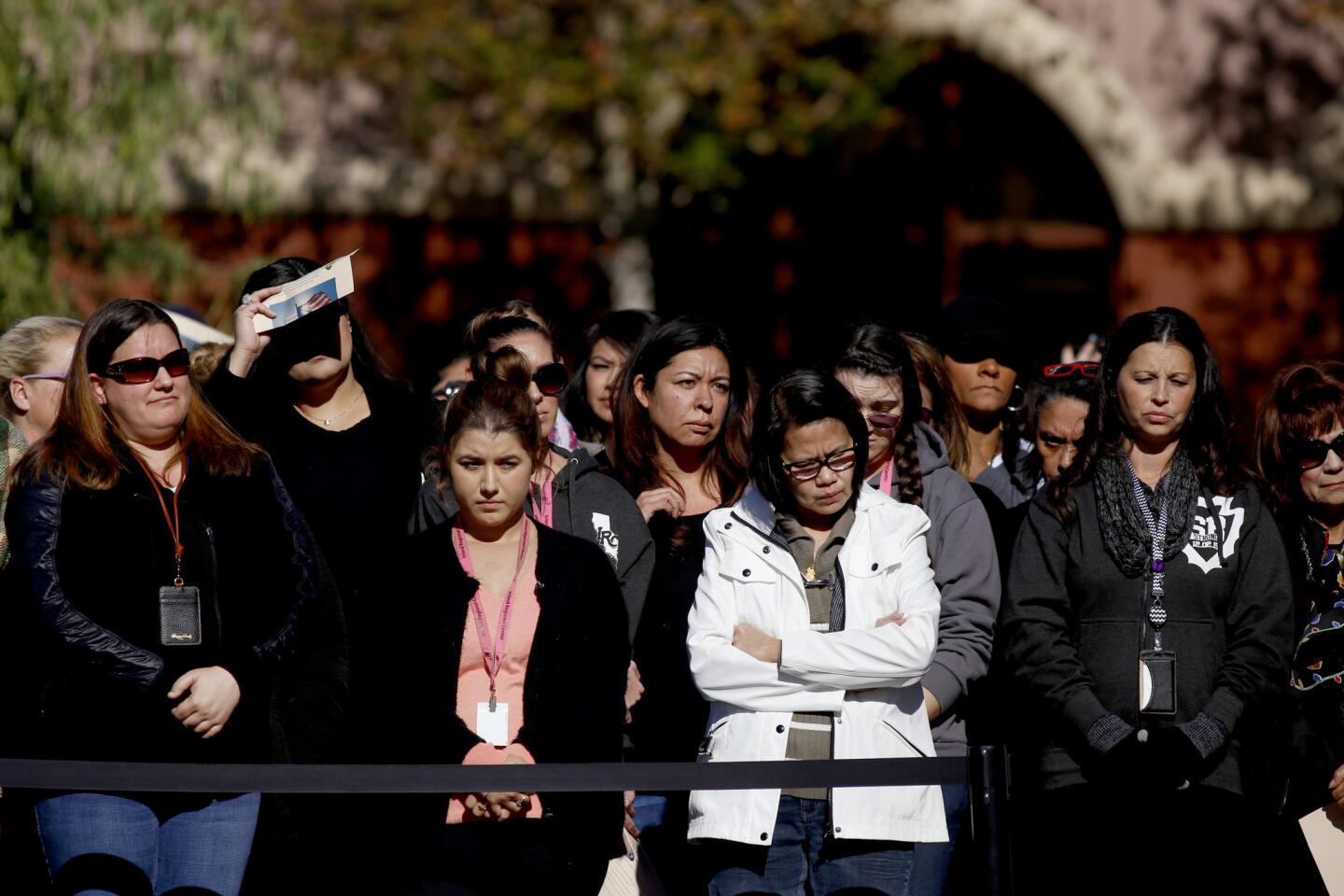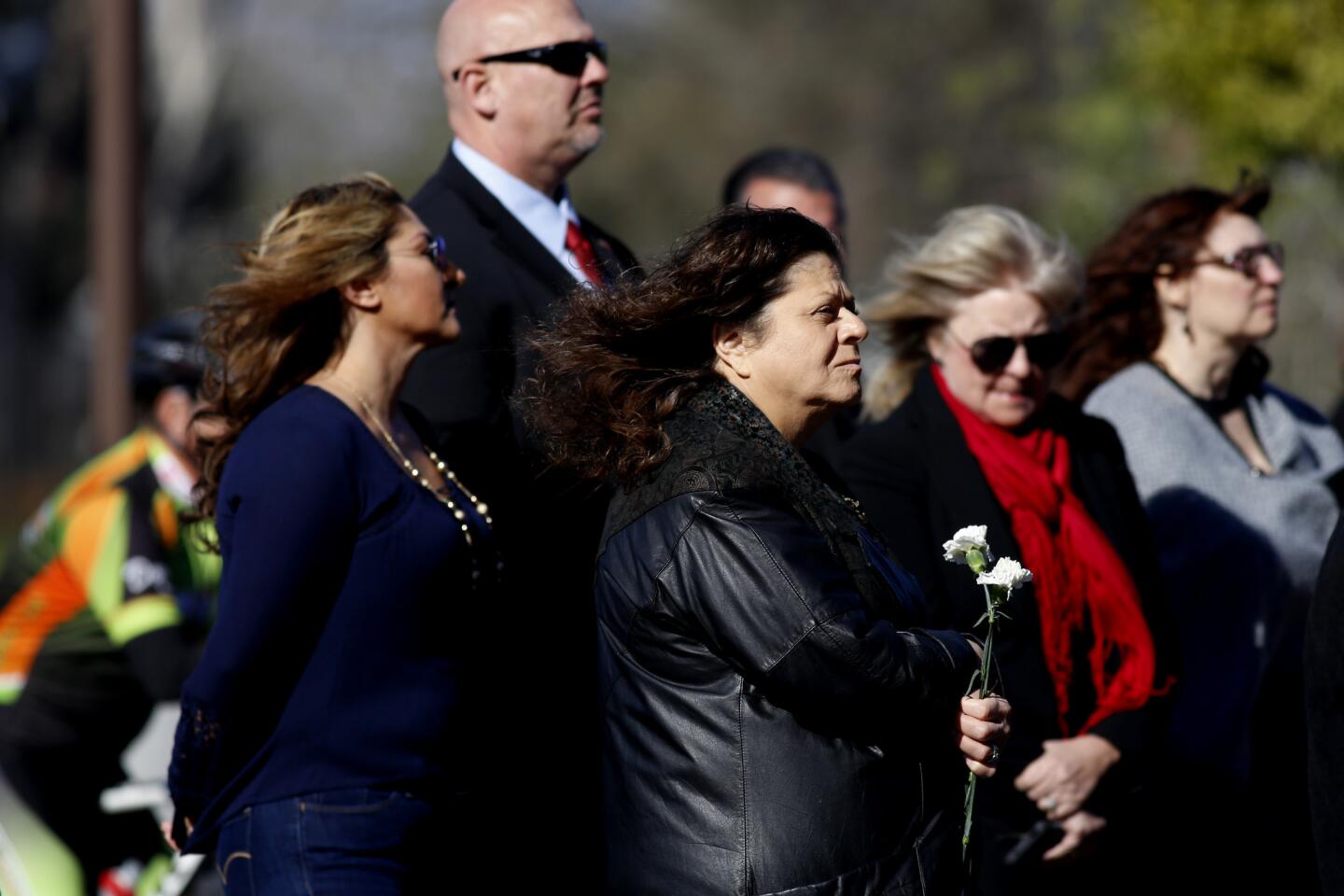The family of this San Bernardino terror attack victim is telling his story to anyone who will listen
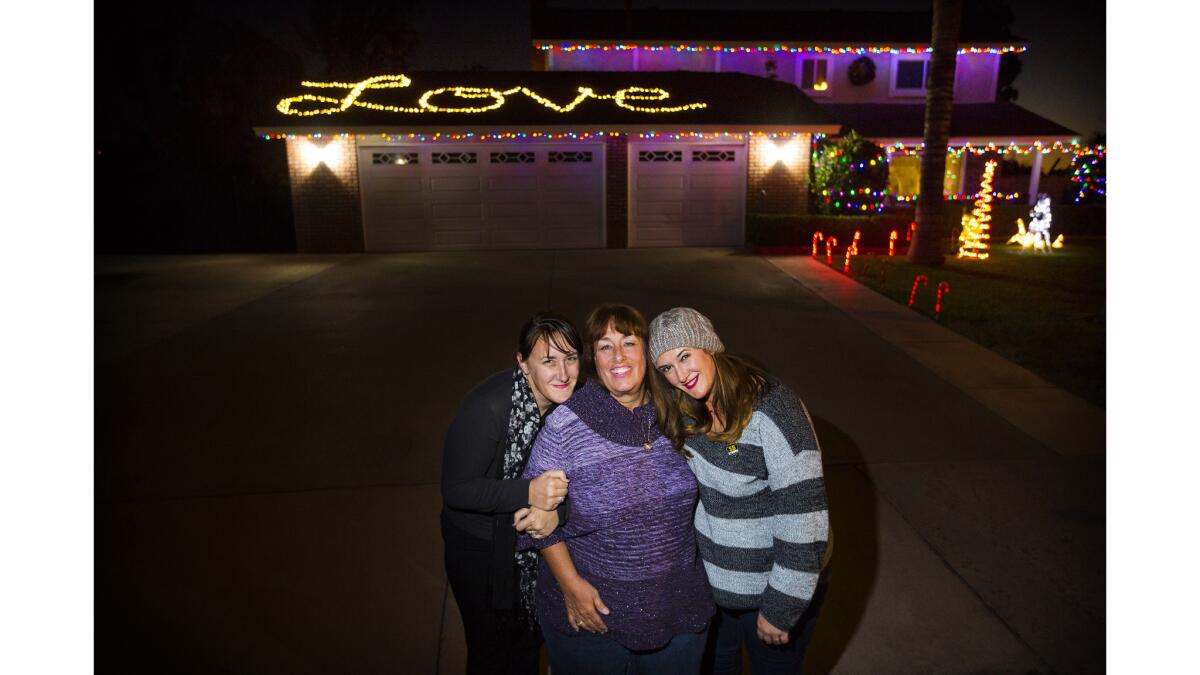
She did not shy away from the details.
For more than an hour one day in November, Trenna Meins, with her daughters Tina and Tawnya nearby, told a class of undergraduates at Cal State San Bernardino about the 36 years she spent building a life with her high school sweetheart — and about the horrific moment of violence that ended his life.
Damian Meins and 13 others were killed in the Dec. 2, 2015, terrorist attack at Inland Regional Center in San Bernardino.
Meins was standing by a Christmas tree that day, taking photos at an office party with his co-workers, when a couple in tactical gear walked in and opened fire with semiautomatic rifles.
He didn’t have a chance to run or duck, his widow told the students. He was shot five times and died by the tree.
At Meins’ funeral, which was held at the same Catholic church in Riverside where he and his wife were married, the Rev. Art Mateo told mourners the attack would lead to changes that would make society safer.
“That is the only way I can make sense of the violent death of Damian Meins,” he said. “I know good will come of this.”
The family of four was as close as a family can be.
The attack made them three — a mother and her adult daughters, who have lived a year of countless moments of unbearable sadness, anger and numbness at the loss of the man they each adored.
When you go to the counselors, they don’t know how to handle this as well. They end up crying and you end up trying to help the counselor.
— Trenna Meins
But they push through those moments, telling their story to students, to legislators, to whoever will listen, because they believe good will come of this, in the form of tightened restrictions on guns.
::
Damian Meins, 58, was remembered at his funeral as “one of the good guys.”
He was dedicated to his family, having cared for both of his parents when they were dying. He was smart and good at his job. He was “really fun. Insanely fun,” said his daughter Tina.
When Tina and her sister were young and their mother was away at night school, their father would turn off all of the lights in the house, use paper to cover up any clocks, and the three of them would chase each other, their giggles filling the rooms.
When his daughters were older, the three of them became travel companions — exploring Europe and Asia together.
“All the time … It was him and the kids,” said Trenna Meins, 59.
They even had a family motto — “amplecti possibilitate,” a reminder to “embrace the possibility.” Over the years, Damian developed an obsession for decorating the family home for holidays — Christmas, Halloween, St. Patrick’s Day, Valentine’s Day, even Mardi Gras.
The day of the attack, he woke up early, put on a snowman Christmas tie and left for work.
Trenna stayed home with the flu; Tina, 34, went to work in Irvine. Tawnya, 29, went to her job in Riverside.
They saw the news on television and quickly realized that Damian had been in the room where the attack took place.
Soon enough, reporters were camping outside their door. FBI agents were in their home. Politicians they had never met were calling, asking to speak at the funeral. Family members, filled with fear, were anxious to buy guns for protection.
In those moments, “everything is in the air and you have absolutely no control over anything,” Trenna said.
The days after the attack were filled with immediate tasks — calling loved ones, arranging their travel, coordinating with the coroner’s office to plan the funeral.
All around them, they could feel people were filled with anger at the injustice of the attack. But Trenna and her daughters were determined not to allow anger to overtake them.
“Even in our time of great sadness, we have gratitude; we know that the world is still filled with love,” Tina wrote in a tribute to her father on a Gofundme page in the days after the attack.
The weekend after Meins’ funeral, Tina and Tawnya took their father’s stored holiday lights and wrote the word “Love” in lights on the roof.
It was a message to their father — and to those whose sense of tolerance had been rocked Dec. 2.
They also immersed themselves in the details of the attack, thinking that if they could decipher what went wrong, they could prevent more attacks.
They learned that the shooters, armed with semiautomatic rifles, had in just two or three minutes fired more than 100 rounds.
They learned that when the couple were killed, they had more than 2,000 rounds of ammunition in their SUV and thousands more in their home. They learned that they had tried to modify a rifle to make it automatic.
When President Obama flew to San Bernardino that December to visit with the families of those killed, Trenna asked him how many people would have to be killed in a single incident before legislators would change the laws.
They “didn’t do anything when all those kids were killed at Sandy Hook” in 2012, she told him. “Is there a number? Give me a number where [they] might do something.”
In the months that followed, they would add their voices to an ever-growing list of families torn apart by gun violence, including families who have lost loved ones to mass shootings, and began pushing the nation’s legislators to do something about gun control, knowing that it would be a battle with little immediate payoff.
Like many of those families, they have carried Damian’s picture at vigils and told his story at news conferences and in the halls of Congress. They have written op-eds.
They are sympathetic to gun owners. Their extended family includes members of law enforcement and the military and avid hunters. But they have come to see some kind of restrictions on guns as the only solution.
They are also careful to emphasize that they do not support a ban on Muslims or efforts to blame the religion for the attack.
The work gives them something to focus on.
“When everything is quiet at night, when you sit down for a minute, that’s when things are the hardest,” Tina said. “Trying to advocate and make change, that’s easier for me.”
They also find solace in working together, because outsiders have a hard time understanding their situation.
“People want to do something to help you but really, there’s nothing they can do,” Trenna said. “When you go to the counselors, they don’t know how to handle this as well. They end up crying and you end up trying to help the counselor.”
On June 13, the day after a man killed 49 people at the Pulse nightclub in Orlando, Tina wrote a letter to representatives in Congress: “With every shooting since December 2nd, I find myself asking, how many more incidents will occur and how many more people will die before we make changes?”
That Sunday, Father’s Day, the three of them mailed a letter to every U.S. senator, asking them to consider taking action on proposals including background checks, banning people on the no-fly list from purchasing weapons, an assault weapons ban, tracking of ammunition and increased funding for gun violence research.
“Some people point out that nothing will bring my father back, and they are right about this,” Tina wrote. “But I write to you because I do not want more Americans to feel the devastation and heartbreak my family and I feel.”
The 100 letters elicited four responses.
They knew that pushing on a heated issue like gun control would not be easy. But they are resolute.
“Just because there is not a 100% right answer for all of this doesn’t mean we shouldn’t move forward,” Trenna told the Cal State students. “You have to trust me when I say what we have is not working.”
For more Inland Empire news follow me @palomaesquivel
MORE ON THE SAN BERNARDINO ATTACK
San Bernardino massacre memorial: Victims, responders honored with moment of silence
In a dark year of terrorism and record homicides, San Bernardino also showing signs of hope
First Times photographer at San Bernardino mass shooting recalls a mad dash with police
More to Read
Sign up for Essential California
The most important California stories and recommendations in your inbox every morning.
You may occasionally receive promotional content from the Los Angeles Times.
